DTF printing offers unique flexibility on many types of materials. This versatility appeals to small businesses, creators, and large production companies. Direct-to-film (DTF) technology is gaining popularity due to fast-evolving printing trends.
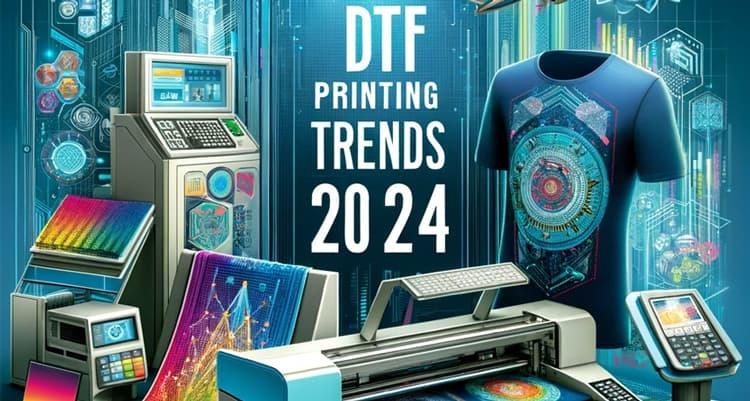
As we move into 2024, new DTF printing trends and advancements are emerging.
These innovations make DTF printing more adaptable, sustainable, and accessible than ever before.
In this article, let’s explore what’s new and exciting in the DTF printing industry. So stay tuned!
Enhanced DTF Printing Quality with New Ink Formulations
One of the first areas where we’re seeing improvement is in DTF ink technology. The quality of prints, especially in color vibrancy and durability, has improved due to new ink formulations.
Sustainable Inks
As environmental consciousness grows, consumers and businesses alike are seeking sustainable solutions. This has driven the development of sustainable inks made without harmful chemicals.
Many new DTF inks in 2024 are water-based and free from toxic compounds. This makes them safer for both the environment and workers. Sustainable inks help reduce the environmental footprint. They also appeal to customers who care about sustainability.
Vibrant Colors
Ink makers are trying to boost color vibrancy, making DTF prints richer and more intense. New specialized inks are now designed for brighter, more saturated colors.
This improvement makes prints look more appealing to the eye than ever. Some brands are also introducing UV-reactive and neon inks. These unique options add a special touch to designs. They create prints that shift colors or glow under specific lighting.
Improved Durability
Long-lasting inks are also gaining attention. Many new inks help prevent cracking or fading over time. This durability makes DTF prints ideal for high-wear uses. Sportswear or outdoor gear are some examples.
These prints can withstand washing, stretching, and sunlight. With these improvements, DTF is becoming a stronger competitor to other methods. Customers can expect prints that stay looking new for longer.
Advanced Film Types for Versatile Applications
In 2024, advancements in DTF film technology will enable more diverse applications. We’re talking from accessories to apparel to home decor!
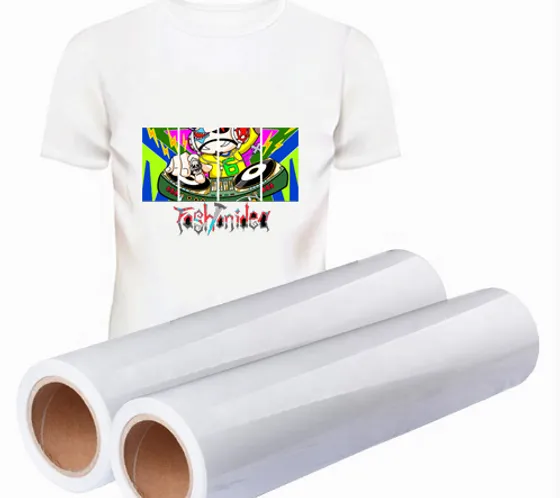
Enhanced Flexibility and Adhesion
Newer DTF films offer improved flexibility and adhesion. These advancements result in prints that look great and feel comfortable to wear. Flexible films are beneficial for stretchy materials like sportswear.
They help designs stay intact, even with movement, preventing peeling or cracking. This is important for activewear and athleisure, where both comfort and durability matter.
Temperature-Resistant Films
Some DTF films are now resistant to extreme temperatures. This makes them perfect for uses beyond standard apparel.
For example, you can apply temperature-resistant films to items that experience high heat.
Car interiors or kitchen accessories can all take advantage of it. This innovation creates new product categories where DTF printing wasn’t possible before.
Specialty Films for Unique Effects
Film manufacturers are introducing specialty options to cater to creative markets. These include metallic, glitter, and holographic films. Such options allow for unique and eye-catching designs that stand out. These films add texture and shimmer, giving prints a luxurious look and feel.
Holographic films can change color based on different light angles. This creates a dynamic, eye-catching effect that stands out. These films are almost viral in the fashion industry! Such creative options allow brands to stand out and offer exclusive products.
AI-Driven Design and Workflow Optimization
Artificial intelligence (AI) is beginning to impact the DTF printing industry. It brings new possibilities to design and enhances production workflows.
With AI, DTF printing is becoming more efficient and accessible for users at all levels.
Automated Design Enhancements
With AI, even beginners can create professional-looking designs. Some DTF software now includes AI-driven design suggestions. The design suggestions assist users in enhancing print quality.
These tools can also help adjust layouts for a more polished look. Additionally, they offer color selection tips to make designs stand out. These tools benefit hobbyists who may not have a background in graphic design. Small business owners can benefit from this, too.
Smart Color Matching
AI color correction matching helps ensure that designs on the screen match the print. This technology reduces discrepancies between digital and physical colors, preventing costly reprints. AI tools provide accurate color representation, ensuring that each project meets high-quality standards.
This consistency helps maintain brand integrity and customer satisfaction. With AI, color accuracy becomes a reliable feature across every print. This technology helps prevent costly reprints by ensuring colors appear as intended. It reduces wasted materials, which is both efficient and sustainable.
Delivering accurate color matching helps businesses maintain consistent product quality. Precise color matching is essential for brands to maintain consistent product quality.
Workflow Automation
AI-powered software can manage print queues, schedule maintenance, and track production times. Automated workflows make production more efficient.
They help businesses fulfill orders faster and with fewer errors. This is especially useful for high-volume businesses. By streamlining production and reducing downtime, these workflows maximize productivity.
Sustainable DTF Practices for a Greener Future
Sustainability is a growing concern across all industries. And DTF printing is no exception. Here are some ways the DTF industry is moving toward greener practices in 2024.
Biodegradable Films
Traditional plastic films used in DTF can take years to decompose. In response, manufacturers are now developing biodegradable films. These new films break down more quickly and safely in the environment.
Eco-conscious consumers find these films appealing. They also help businesses meet sustainability goals without sacrificing print quality.
Water-Based Inks
Water-based inks create less environmental waste than solvent-based inks. Solvent-based inks can release volatile organic compounds (VOCs) during printing.
As a result, many companies are switching to water-based options for a greener approach. These inks perform well on a variety of fabrics. This versatility reduces the need for harmful chemicals.
Energy-Efficient Printers
Another sustainability trend is the development of energy-efficient DTF printers. These machines consume less power. They do so without compromising print speed or quality.
Energy-efficient models are perfect for businesses aiming to reduce electricity costs. They also help cut the carbon footprint. This aligns with the broader industry shift toward sustainable and responsible practices.
Increased Accessibility for Small Businesses and Home Setups

Another sustainability trend is the rise of energy-efficient DTF printers. These machines use less power while maintaining print speed and quality.
Energy-efficient models are perfect for businesses that want to lower electricity costs. They also help reduce the carbon footprint. This shift aligns with the broader industry move toward sustainable, responsible practices.
Affordable DTF Printers
Printer prices are decreasing as technology advances. This trend makes it easier for small businesses and individual entrepreneurs to enter the DTF market.
They can do so without a significant financial commitment. Lower-cost options still provide quality results. As a result, businesses can offer high-value, customized products without breaking the bank.
Compact, Easy to use Designs
Some of the newer DTF printers are compact and easy to set up. This makes them suitable for home-based businesses or small studios. These models often feature simplified interfaces.
This allows users with limited technical knowledge to produce high-quality prints. They can do so with minimal learning time. For those starting in DTF, these printers provide an accessible entry point.
DIY and Starter Kits
DTF starter kits are a convenient way for beginners to start printing immediately. These kits usually include a small printer, heat press, films, and inks.
They offer all the essentials at an affordable price. DIY kits are also popular among hobbyists and crafters. These kits allow them to experiment with DTF without a significant upfront cost.
Customization on Demand: DTF’s Role in Personalization Trends
As the demand for personalized products grows, DTF printing is becoming popular. It offers customized, high-quality designs that meet the needs of today’s consumers.
Single-Order Capability
Traditional printing methods need big batch sizes. DTF allows businesses to fulfill individual orders quickly. This makes DTF a practical choice for on-demand printing businesses.
These businesses are growing in popularity as consumers seek unique, personalized products. DTF’s ability to handle single orders helps cut waste. This makes it more efficient for small-scale production.
Fast Turnaround Times
With the latest DTF printers, businesses can complete orders. This helps meet customer expectations for rapid service.
Faster turnaround times are crucial in a market where speed affects customer satisfaction.
Printing on demand without sacrificing quality offers businesses a more personal, responsive experience.
Expanding Market Potential
DTF printing is versatile. You can apply it to various products, from custom T-shirts to unique home decor items.
Businesses can offer customizable products across many categories. This allows them to tap into different market segments. As a result, they can reach a wider audience.
They also have the opportunity to stand out in a competitive marketplace.
Integrating Special Effects: Expanding Creative Horizons
Adding special effects to DTF prints opens new creative possibilities for printing trends. These printing trends attract businesses and artists. They seek to push the boundaries of design.
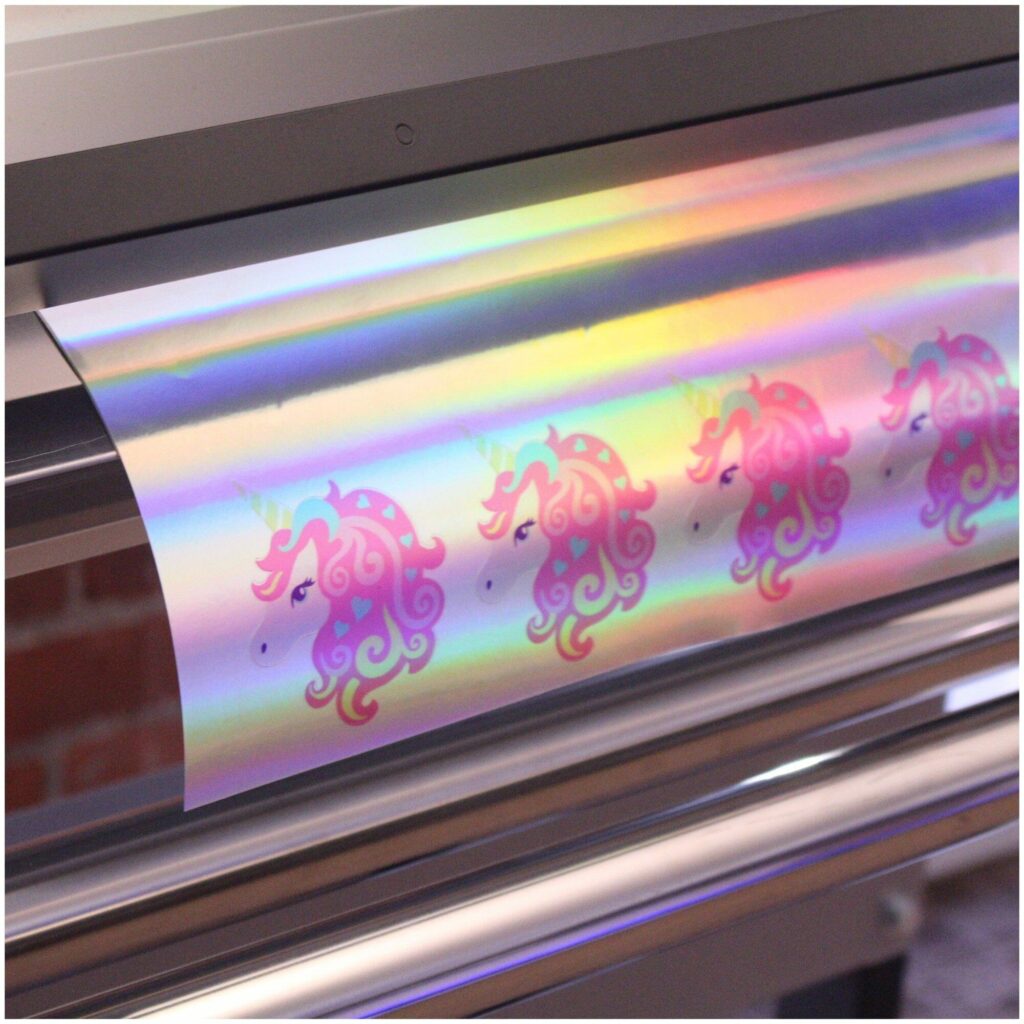
Metallic and Holographic Prints
Metallic and holographic films create a reflective, shimmering look. These effects are prevalent in fashion and accessories. Eye-catching details are essential in these industries.
A metallic print on a bag or a holographic logo on a hoodie adds a premium feel. This makes products more desirable to customers.
Glow-in-the-Dark and UV-Activated Inks
Inks that react to light can glow in the dark or change colors under UV light. These effects create interactive designs that are fun and engaging.
They are trendy in markets targeting younger audiences or novelty items. A little extra “wow” factor can make a big difference in these areas.
3D Puff Inks and Raised Effects
3D or “puff” inks give prints a raised, textured feel, creating a unique tactile experience. This effect works well for logos, slogans, and designs that need to stand out on apparel.
Raised prints add depth to the design. This enhances both the visual and physical appeal of the final product.
The Rise of Hybrid Printing Solutions
Hybrid printing solutions are gaining popularity. These solutions combine DTF with other methods, such as sublimation or screen printing.
The combinations offer more creative possibilities. They also meet the needs of a variety of projects.
Mixed Media Creations
Blending DTF with techniques like embroidery or vinyl layering creates multidimensional designs. This approach is popular in fashion and branding. Designers often seek to combine different textures and finishes to create a look.
For example, pairing DTF with embroidery can add visual interest. It brings a touch of classic craftsmanship to modern printing. This mixed-media approach is prevalent in streetwear and custom merchandise.
In these markets, individuality and uniqueness hold value. These combinations offer more creative possibilities and meet the needs of diverse projects.
Sublimation-DTF Hybrids
Businesses can produce vibrant, full-color images by combining sublimation and DTF printing. This method works on a broader variety of materials, including dark fabrics.
Dark fabrics are sometimes challenging to print on with sublimation alone. The hybrid technique creates vibrant, durable prints. These prints do not fade fast. This makes the method versatile for items like custom apparel and accessories.
Flexible Production Options
Hybrid setups allow businesses to switch printing methods based on a project’s needs. This flexibility benefits companies with a wide range of products.
It also helps those serving clients with unique requirements. Hybrid printing combines the strengths of different methods. It helps businesses meet diverse project demands.
This approach reduces the need for separate equipment for each technique.
Improved Software for Design and Workflow Management
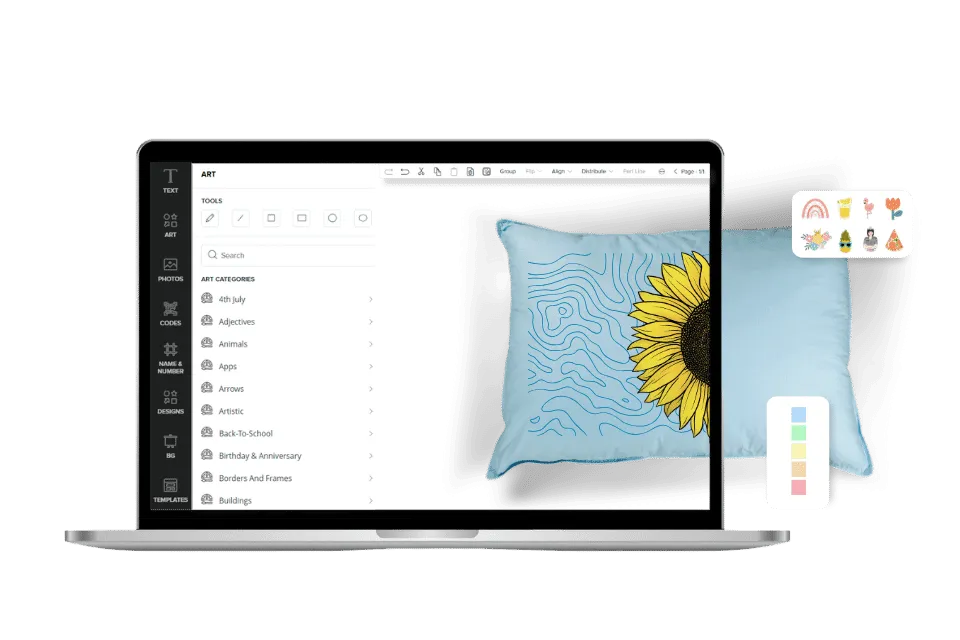
In 2024, we see a push toward software improvements that streamline DTF design and production workflows.
These advancements make DTF more accessible and efficient. They are accommodating for users who focus on ease and speed.
Easy User Design Applications
New design applications simplify the process of creating print-ready artwork. They make it easier for users with limited graphic design experience. These applications often include templates, drag-and-drop features, and quick editing tools.
These tools allow even beginners to produce professional-looking designs. This type of software benefits small business owners. It also helps those who want to bring ideas to life quickly. Users can do this without spending hours on complex design programs.
Workflow Management Tools
Workflow management software is another critical development. It enables businesses to oversee every aspect of the printing process. From order intake to final shipment, companies can manage everything.
These tools assist with inventory tracking, order prioritization, and production scheduling. This ensures that operations run in a smooth manner. This reduces manual work and streamlines tasks.
Hence, workflow software allows businesses to manage larger volumes of orders. It also improves accuracy and reduces downtime.
Cloud-Based Solutions
Cloud-based software platforms allow users to store designs, manage orders, and access workflows. That is remote, from any location. This flexibility helps larger companies and collaborative teams work together.
Team members can contribute, even if not in the exact location. Cloud-based solutions also make it easier to scale. As a business grows, it can increase production capacity without overhauling existing systems.
Expanding Applications of DTF Printing in New Industries
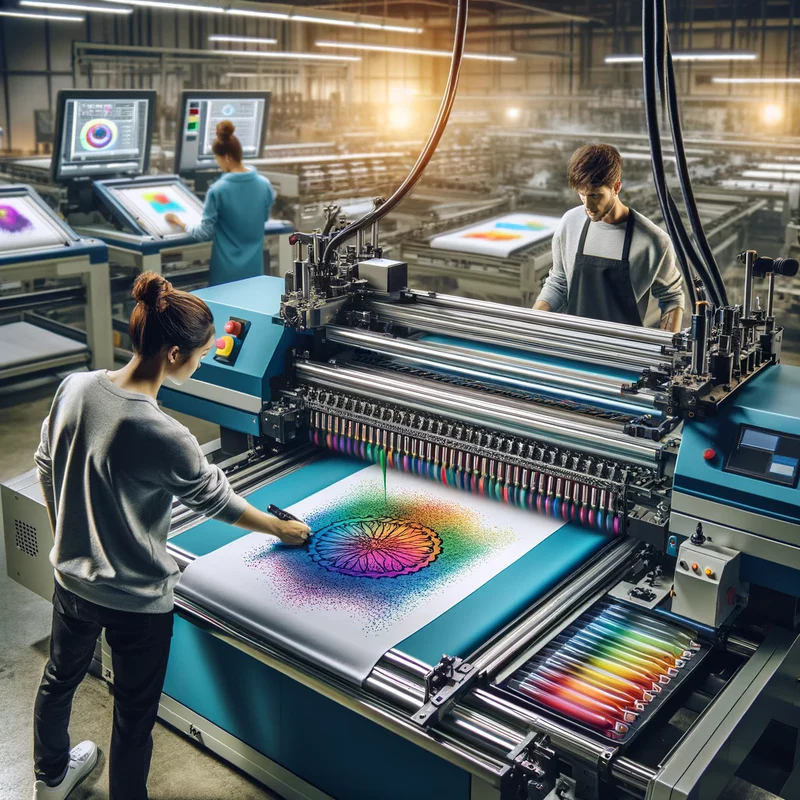
DTF printing has become well-established in apparel. In 2024, it is expanding into other industries. This growth showcases its versatility. It also highlights its potential for new applications, which are becoming a part of DTF printing trends.
Home Decor
DTF’s flexibility makes it popular for items like pillow covers, wall hangings, and curtains.
Custom home decor products are in demand. More people seek to personalize their living spaces.
DTF printing can bring intricate, colorful designs to various fabrics! This allows businesses to tap into a growing market.
Automotive Industry
Seat covers, mats, and custom decals are an emerging market for DTF printing trends. DTF creates durable and vibrant designs.
These designs withstand everyday wear, making DTF ideal for automotive applications. Enthusiasts and collectors often seek personalized or custom designs for their vehicles.
DTF printing delivers these designs with great precision.
Electronics and Gadget Accessories
DTF is making its way into electronic accessories as well. Phone cases, laptop sleeves, and tablet cover all use DTF.
The growing demand for personalized tech accessories drives this trend. Consumers are looking for ways to express their style. DTF can produce detailed images and vibrant colors.
As a result, companies can offer a variety of unique designs. These designs appeal to tech-savvy buyers.
Conclusion: Embracing the Future of DTF Printing in 2024
The advancements in DTF printing in 2024 make it an exciting time for the industry. DTF printing trends are evolving to meet the diverse needs of modern consumers and businesses. This evolution includes high-quality ink formulations, sustainable practices, and accessible equipment.
As technology improves, DTF printing trends will continue gaining ground. It will expand into new markets and offer even more creative possibilities.
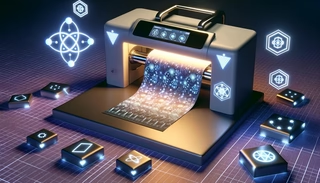
If you’re a small business owner exploring DTF for the first time, these trends may interest you. If you’re an established player, there’s something here for you too! The trends provide many opportunities. They can help you stay ahead in the industry.
Embracing these advancements will help you stay ahead of the curve. You can create innovative products that capture attention and meet today’s market demands. The future of DTF printing trends hold great potential. Those who adapt to these trends will find new ways to connect with customers and strengthen their brand.
In a world that values personalization, sustainability, and high-quality craftsmanship, DTF printing stands out as a versatile and forward-thinking option. Looking ahead to the rest of 2024, one thing is clear: DTF printing is here to stay. It’s improving every day.